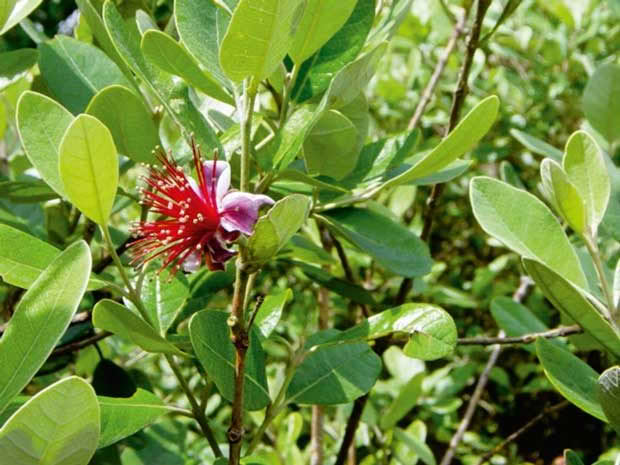How to choose your fruit species

Don’t worry, be happy, and plant what you love.
Words: Ben Gaia
Forget northern hemisphere climate zones. Our climates and conditions, especially inland, are New Zealandish and therefore outrageous. You can see four seasons in one day at any time of year. Winds, snow and floods, and searing drought can all strike before breakfast. Plagues of wasps, wild boars, deer, carnivorous parrots and summer visitors can all play havoc with the details of the modern visionary peasant’s calendar of activities. Cold-hardy apples, pears, nashis, berries and currants are all dead certain to provide fruit for you in the long term, and even peaches, plums, apricots and cherries east of the Divide. Feijoas and citrus in warmer areas will gradually build your supply of fruit for eating and bottling until you have a surplus to give away or trade.
It seems to me the essential lessons are:
• grow wholesome food in a home orchard
• give things a try while you decide
I have extrapolated this and had a go at raising everything over the last 23 years, from olives to coffee to rice, to medicinal herbs, vegetables, berries, and, above all tree fruit, nut and timber crops. We have so much variation in micro-climate from one block to the next that anything could work, within sensible limits of the plant type. That means no mangoes in Southland, no strawberries in the tropics. However in trying everything, and through many bitter and expensive disappointments, I discovered – dumbfounded – that given protection, citrus, tamarilloes and nashi pears produce fruit well in our wet South Island alpine/rainforest climate of 12 metres of rain a year.
“Nuts won’t grow here,” I was told, but they do. Hazelnuts will take 20 years and then produce nuts. I can categorically state that it is too cold here for pawpaws, coffee, tea, rice, passionfruit, bananas, mangoes, lychees, scarlet flowering eucalypts and pohutukawa. But grapes, peaches and blueberries love a good frost, and in the right kind of year are covered in fruit. I am still waiting for avocadoes and chestnuts – no luck yet – but 23 years is a short time. I still have many things to try too, like new varieties of peach and nectarine, fabulous giant berry vines and the new über-feijoas. Even if they die, you learn more about the needs of different fruits, and the limitations of your site.
ANIMALS
Animals are a constant source of challenges in the country. Here on the Coast, all the berries and spuds are eaten by wild birds so we have to specialise in lettuce and apples or build complex fortress-like structures. Having a dog can mean more fruit through fewer possums. Having a cat could mean fewer feijoas as they are bird-pollinated.
My advice is always to keep livestock at least two well-made fences away! Sheep and goats can be a nightmare for the new orchard grower, but even mean-spirited cattle and horses will vindictively pull out your freshly-planted efforts in a single night if the gate is left open. Grazing birds like geese can be very helpful for weed control, manure spreading, and security alarms!
SHELTER
Shelter trees become second nature to the New Zealand smallholder. Some like them round and shiny, some like them sharp and pointy, but a good shelter belt will up your orchard temperatures by five degrees and reduce evaporation. Don’t overdo thickness and height, avoid shading your orchard, and always leave a good sunny opening to the north. Walled gardens like in Victorian England are in fashion and are often a good solution for wind-exposed rural South Island back-country farms. If you’re planning to harvest your shelter trees, plant different species and ages to ensure shelter is maintained as you harvest. Firewood and timber are very useful byproducts for country life, but you don’t want to suddenly cut down all your shelter.
PLACEMENT
The best of all the permaculture principles is simple: plant an orchard near the house so you don’t have to go far to get the fruit. As Sheryn said in her article, find out what you want to do, it’s the secret to a happy life! Try it for size around the land you have been given. If it’s Otago, you may find grapes and apricots do so well that you want to make a career out of them. If it’s Northland, you may become enthusiastic at the huge diversity of semi-tropical crops from bamboo to bananas that can be produced from a small farm. Try everything, but use some common sense – don’t waste time trying to grow rice in Queenstown or olives in the Alps!
About the author
Ben Gaia grows trees in the extreme climate of the West Coast of the South Island and runs a mail order nursery for organic fruit and forestry trees, www.dialatree.co.nz
Love this story? Subscribe now!
 This article first appeared in NZ Lifestyle Block Magazine.
This article first appeared in NZ Lifestyle Block Magazine.
